BBC2
Fraser Nelson's updated article for the Spectator here continues his presentation of UK employment levels comparing changes by Prime Minister.
Figure #1
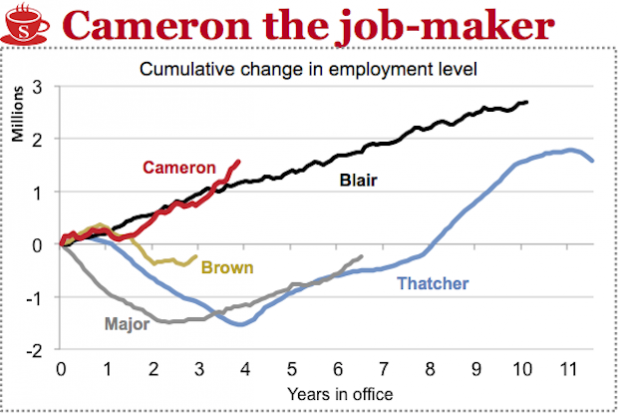
I looked at the impact of arrivals from abroad on these numbers for Blair, Brown and Cameron here on both levels and rates of employment. Those figures only come out quarterly, so an update on that aspect will have to wait.
But to continue tracking the extent to which the relative proportions of full-time and part-time work have changed and the proportions of employee and self-employed, updated pictures below using series from the ONS on the same seasonally-adjusted basis as Fraser's MGRZ.
Firstly the change in numbers of full-time employees in thousands. Cameron is still behind Blair in creation of full-time 'pay packet' jobs, but making up ground.
Figure #2
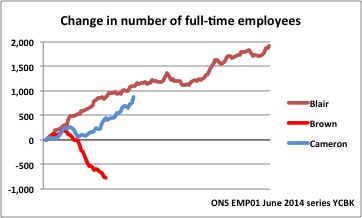
The next three pictures are to a different scale from the one above, but all share the same scale for ease of comparison, numbers in thousands again.
This one shows that Blair employment growth comprised a large amount of part-time employment, about a third of total growth by number. In contrast, the numbers under Cameron are barely significant, and continue to bump along near the bottom as the smallest component of change.
Figure #3
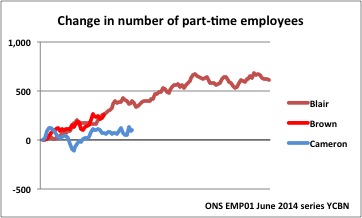
In contrast, and as much reported and puzzled over, here is the 2013 upsurge in full-time self-employment under Cameron. I noted previously that the pace and magnitude of the most recent change was not unprecedented, but that previous change on this scale was not sustained, and suggested forecasters might do well to be cautious before calling a structural change. These numbers have come off the boil in the most recent figures from the ONS.
Figure #4
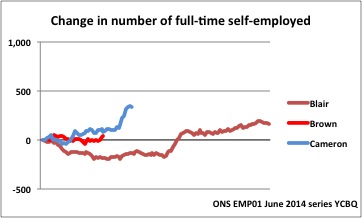
Increases in part-time self-employment had been greater and sharper than previously, but as with full-time self-employment at least a pause in growth of this component of overall change.
Figure #5
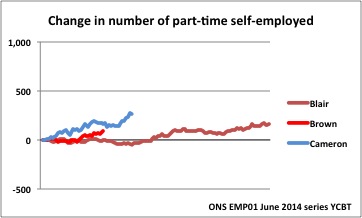
As Fraser notes, average employee earnings are not by any means matching the growth in employment, and it is possible that self-employment earnings are doing even less well. Watch this space ...
If you're interested in growth in self-employment, follow links for illustrations of data and thoughts on ageing and the UK's open labour market as drivers.
prompts and links ...
Jonathan Portes
Writing in Financial World, Jonathan puzzles over the lack of productivity rebound from recession, and wonders whether ground has been lost permanently here.
Morgan Stanley
There are five key drivers of increases in UK self-employment. Overall these suggest the growth derives from weakness in the economy and is a sign of slack. Their report should download here.
Steven Toft (@FlipChartRick)
Increased self-employment doesn't appear to be necessarily a good thing, looked at internationally and macro-economically here
Benedict Dellot from the RSA
Growing self-employment results from opportunity not necessity, and suggestions to the contrary are myths to be busted here
Adam Lent from the RSA
High self-employment rates aren't a sign of economic weakness, but stirring entrepreneurial spirit here
TUC
The growth of self-employment is part of a trend towards casualised work, likely to hold back wages, and prevent people from having the kind of secure employment they need to pay their bills, save money and plan for the future here